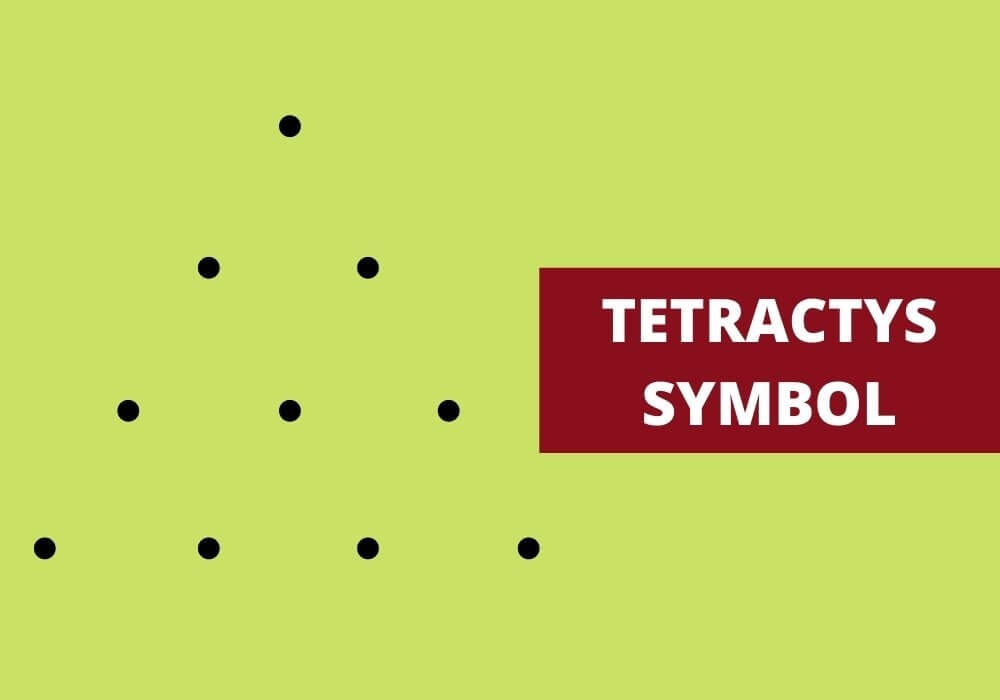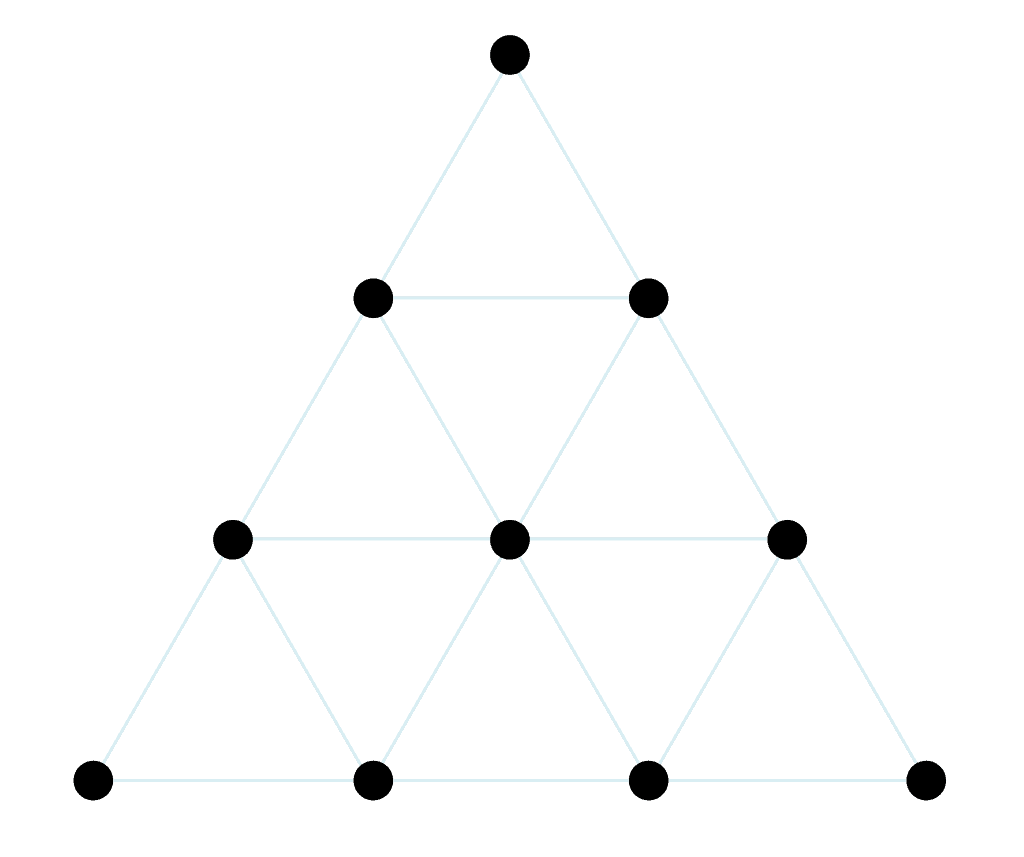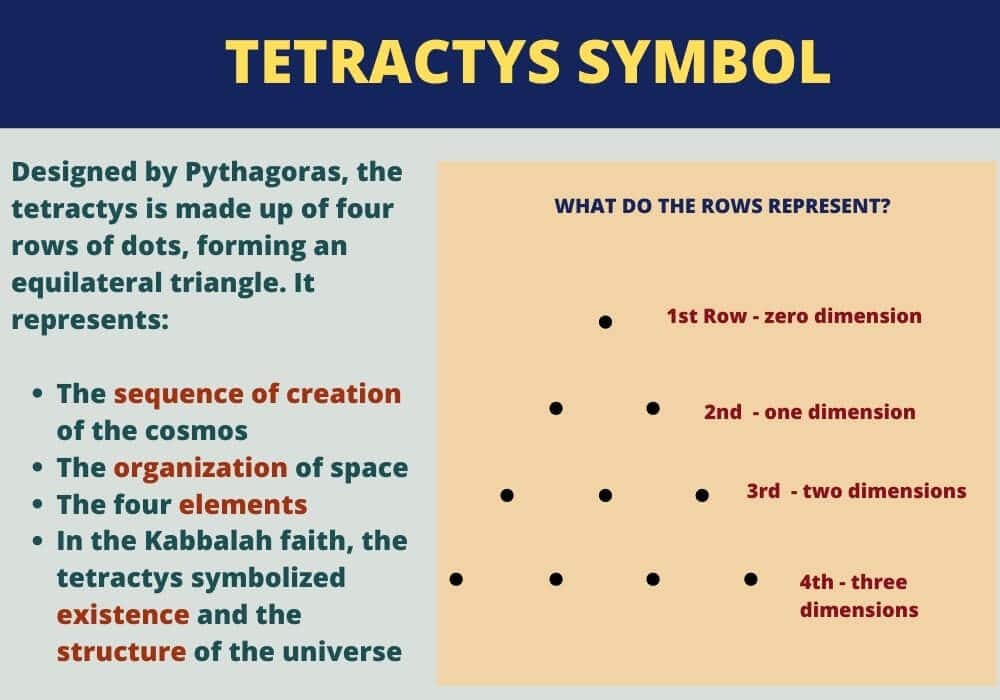
Table of Contents
The Tetractys is a rather unique symbol both because of its appearance and its history. It’s made up of 10 identical dots arranged in four rows forming a triangle. The bottom row includes 4 dots, the second has 3, the third 2, and the top row just 1 dot. The triangle they form is an equilateral one, meaning that its three sides are equally long and its angles are all at 60o. This means that the triangle looks the same regardless of which side you’re looking from.
As for the Tetractys symbol’s etymology, it comes from the Greek word for the number four – τετρακτύς or tetrad. It’s also often called Tetractys of the decad and it’s the geometrical representation of the fourth triangular number T4 (as opposed to T3 being a triangle with 3 rows, T5 being a triangle with 5 rows, etc.)
But why is the Tetractys symbol so important? What makes these 10 dots arranged in a triangle anything more than a simple “connect the dots” puzzle?
Pythagorean Origins

The famous Greek mathematician, philosopher, and mystic Pythagoras designed the Tetractys symbol as a mathematical model. Pythagoras contributed significantly to mathematics and geometry and also founded and developed Pythagorean philosophy. The intriguing aspect of the Tetractys symbol in Pythagorean philosophy is its multiple meanings.
The Tetractys as the Cosmos in Musica Universalis
Each triangular number in Pythagorean philosophy, including the Tetractys, has a unique meaning. T1, or Monad, represents Unity, T2, or Dyad, signifies Power, T3, or Triad, indicates Harmony, and T4, or Tetrad/Tetractys, symbolizes the Cosmos.
According to Pythagoreans, the Tetractys embodies the universal geometric, arithmetic, and musical ratios that form the foundation of the universe. This belief leads to various interpretations of the Tetractys, ultimately considering it as a symbol of the Cosmos.
The Tetractys as the Organization of Space
The Tetractys is also thought to represent the different dimensions of space. The top row, with one point, represents zero dimensions. The second row, with two points, can form a line and represents one dimension.
The third row has three points that can form a plane, representing two dimensions. Finally, the last row, with four points, can create a tetrahedron, a 3D object, representing three dimensions.
The Tetractys as a Symbol of the Elements
In Pythagoras’ time, many philosophies and religions believed the world consisted of four basic elements: fire, water, earth, and air. This idea was central to their view of the universe. The Tetractys, with its four rows, naturally linked to these elements.
People thought each level of the Tetractys represented one element: the top point stood for fire, the second row for water, the third for earth, and the last for air. This connection made the Tetractys a powerful symbol of the Cosmos.
It became key in understanding how the universe is put together, combining the natural world’s elements into a geometric shape. The Tetractys was vital in Pythagorean philosophy, connecting complex math concepts with the real elements of nature.
The Tetractys as the Dekad
The simple fact that the Tetractys triangle is comprised of 10 points was also significant to the Pythagoreans as ten was a sacred number to them. It used to represent a unity of the highest order and was also called The Dekad.

Tetractys Meaning in Kabbalah
The Pythagoreans were not alone in giving meaning to the Tetractys symbol; the Kabbalah, a mystical Hebrew belief system, also interpreted it in its own way. While the Pythagoreans based their understanding on geometry and mathematics, Kabbalah followers derived their interpretation mystically.
In Kabbalah, the Tetractys represents all existence and the universe’s structure. They linked its shape to the Tree of Life, another key symbol in Kabbalah and other beliefs. They also saw the Tetractys’ ten points as representing the ten Sephiroth, or the ten aspects of God.
The Tetractys was also connected to the Tetragrammaton in Kabbalah, which refers to how God’s name (YHWH) is spoken. Kabbalah followers associated each of the Tetractys’ ten points with a letter of the Tetragrammaton. By adding the numeric value of each letter, they reached the number 72, a sacred number in Kabbalah symbolizing the 72 names of God.
The Tetractys in Meditation and Rituals
The Tetractys plays an important role in meditation and rituals, especially in traditions shaped by Pythagorean and mystical ideas. This sacred geometric symbol acts as a key focus for deep thinking, spiritual reflection, and connecting with higher realms.
During meditation, people often picture the Tetractys and use its layers of points to guide their thoughts from the everyday world to higher awareness. This journey, moving from the single top point to the four base points, represents the soul’s spiritual climb from unity to the material world.
In rituals, practitioners sometimes use the Tetractys as a model for creating sacred spaces, as its design reflects balance and cosmic order. The symbol’s ten points are linked with various elements, planets, or spiritual principles, making it useful for symbolic purposes in rituals. Focusing on or using the Tetractys in rituals helps align practitioners with the universe’s fundamental truths, supporting their quest for knowledge and spiritual growth.
Wrapping Up
Although simple in appearance, the Tetractys has complex symbolism and is a multi-faceted symbol with significance to both secular and religious groups. It symbolizes the ratios that can be found in the creation of the universe, outlining the sequences of creation and the fundamental aspects of what we find in the cosmos.








